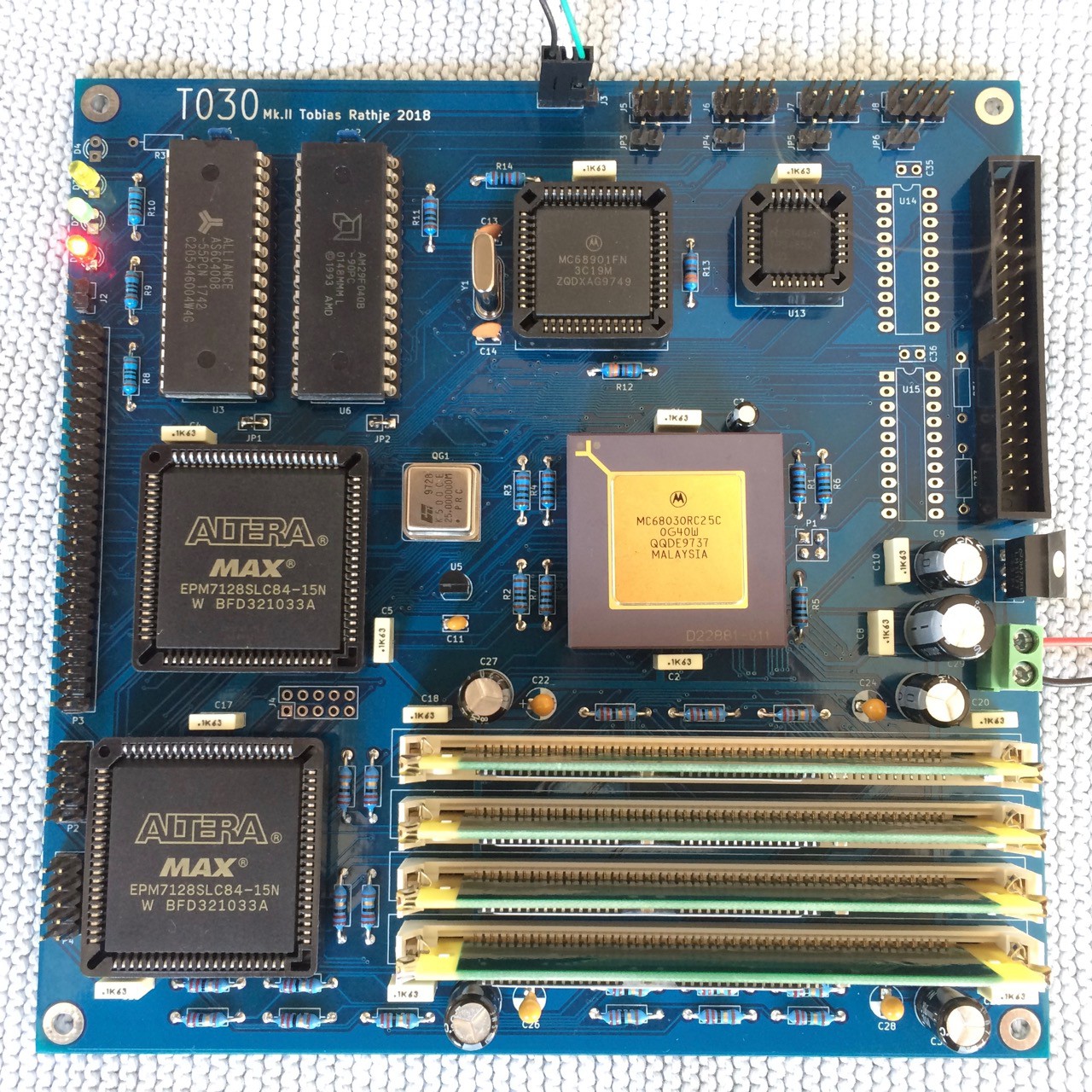It's been a long time since I have posted any updates on this project. Family life has taken up most of my spare time, but mostly in a good way :-)
But in the limited spare time I have left, I can't seem to let this project go. Whether I'm just bitten by the m68k-bug or that I find it incredibly cool to be able to run a modern OS with virtual memory and all the bells and whistles on a homebrew board with a 30 year old CPU, I don't know.
The rather fragile prototype has been sitting on a shelf mostly just humming along, often reaching over 100 days uptime. In an earlier log I stated that I consider the hardware part done, but as time went by I realized that this is not entirely true. The project is not done before I have made the T030 into one single board capable of running Linux. Preferably something others can build and learn from without too much hassle.
So the T030 mk.II is very much work in progress at the moment. Here is what the new board looks like:

It is pretty much the original prototype merged into one single board, with a few notable differences:
The DRAM controller can now handle 16 MB SIMMs giving a total of 64 MB. You might ask why I didn't just take the plunge and use 72-pin SIMMs instead of the ancient 8 bit 30-pin SIMMs. The only reasons I have is that I already had bought a number of 30-pin SIMM sockets and that I want to be careful not too change too many things at a time when doing the new design. Well, the mk.III will probably use 72-pin SIMMS.
While it is cool to have the ubiquitous 555 in any hobbyist project, I have replaced the original reset circuitry with a DS1233 MPU supervisor to provide a stable power-on reset.
Last but not least, I have added an IDE port for attaching either a real harddisk or a CF card for much faster storage that the slow SPI-based SD card interface. The IDE interface is basically just two 74LS245 bi-directional buffers (still not mounted in the picture) with a little additional logic added to the glue CPLD, so it appears as a 16 bit memory mapped port. From a couple of other designs a have noted that it is a good idea to swap the two bytes in the 16 bit port to provide easy compatibility with disks from little-endian systems ie. x86.
Thats it for now, more project logs to come!
 Tobias Rathje
Tobias Rathje
Discussions
Become a Hackaday.io Member
Create an account to leave a comment. Already have an account? Log In.
Looks really cool, I always want to do something like this, maybe in the future
Are you sure? yes | no
Whoa, that looks really good.
Any chance you got a board left? I was planning to build this as well, and a complete board makes it a lot easier.
Or if the design files are available, that would be great as well :)
Are you sure? yes | no
Thanks! I plan on publishing the mk.II design files as soon as I have verified that the new design works as expected.
Are you sure? yes | no
Super neat!
Are you sure? yes | no
Thank you!
Are you sure? yes | no